If you’re comfortable with cPanel and already know your way around hosting, InMotion Hosting delivers a clean, efficient workspace that keeps things fast and under your control. It’s especially well-suited for developers, IT teams, agencies, and anyone who prefers a straightforward, no-nonsense setup with plenty of headroom to grow.
There isn’t much hand-holding built into the experience—and that’s by design. The interface stays out of your way so you can spin up sites, manage email, and tweak server settings without a lot of pop-ups or onboarding clutter.
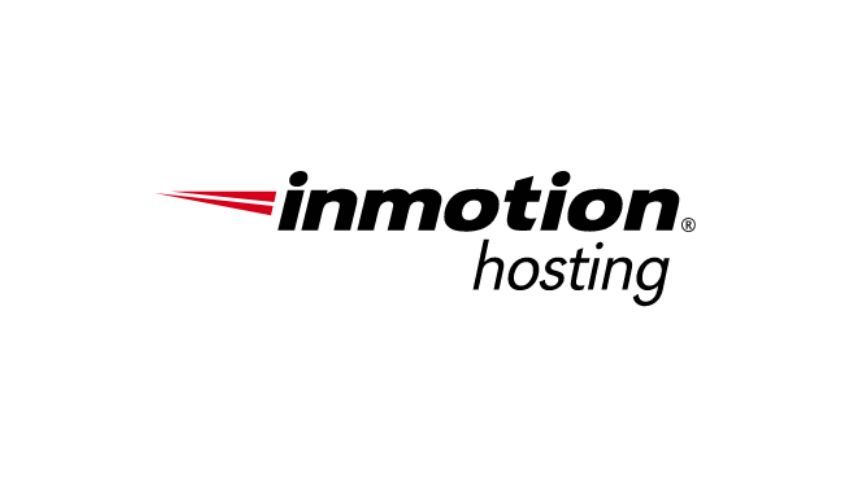
How InMotion Compares to Other Web Hosts
InMotion’s classic cPanel plus Account Management Panel (AMP) combo is a breath of fresh air if you’re tired of beginner-focused dashboards that bury advanced controls. If you understand basic hosting concepts—DNS, databases, SSL, backups—you’ll appreciate how quickly you can get from purchase to production.
New to hosting? There’s a learning curve. It’s manageable, but expect to learn through the knowledge base, community forums, and support rather than step-by-step wizards.
If you’d prefer a more guided experience, consider one of our top web hosting recommendations for beginners.
Where InMotion Hosting Excels
InMotion balances control, performance, and support exceptionally well. It’s a reliable option for teams that plan to scale or have more advanced requirements—without forcing you into an expensive plan on day one.
The platform fits users with technical know-how or growth ambitions. Developers, agencies managing multiple sites, and businesses with in-house IT will feel right at home.
Ease of Use (the good)
Sign-up is straightforward and offers multiple payment options (major cards, PayPal, mailed checks, and U.S. purchase orders). PO processing takes a few extra steps but is handy for organizations with strict procurement rules.
You’ll sometimes see exit-intent discounts during checkout. If you’re on the fence, try revisiting the pricing page—occasional pop-ups can shave a bit off the first term.
Watch for pre-selected upsells in your cart—Backup Manager and other add-ons may be toggled on. Review line items before you pay so you only buy what you need.
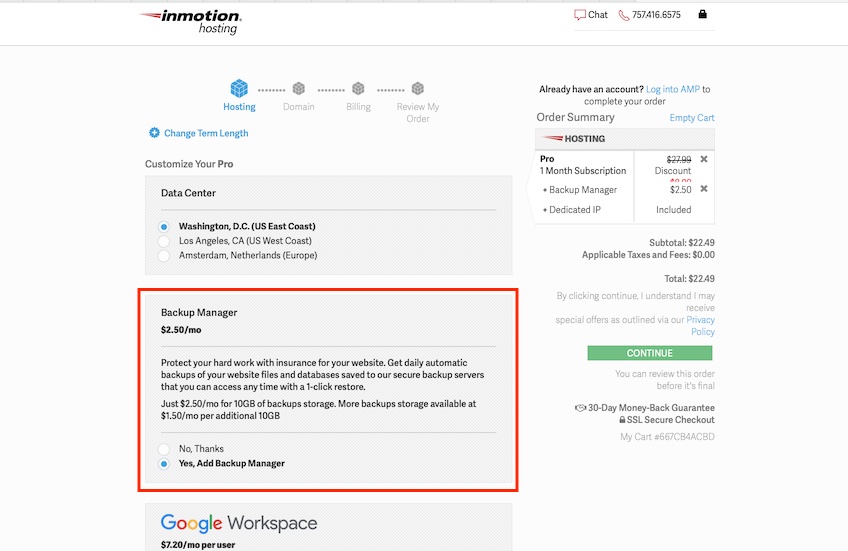
Common add-ons include Google Workspace (typically $7.20 per user/month via InMotion) and a dedicated IP (included with Pro; available as an add-on for other tiers). Monthly billing is available on all shared plans if you don’t want a long commitment.
You can choose your data center—Los Angeles (West Coast), Ashburn/Washington D.C. (East Coast), or Amsterdam (EU)—to keep your site close to your audience and reduce latency.
If you’re not ready to point your domain immediately, you can still start building and testing right away, then connect your domain when it’s ready. A free domain credit is included with 12–36-month terms (first year only; renews at regular TLD pricing).
Inside AMP, account tools (billing, users, tickets) are clearly separated from site tools (cPanel, email, domains), which keeps day-to-day work tidy and fast.
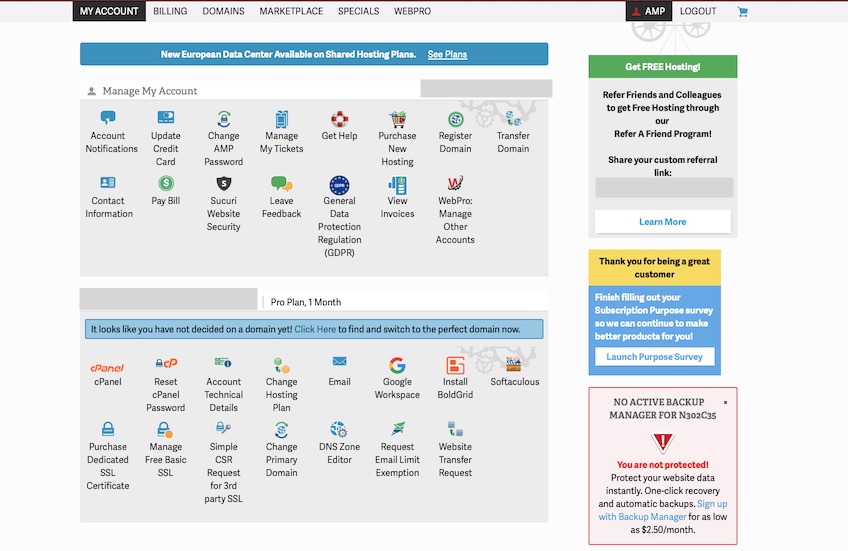
Unlike many hosts, InMotion still uses standard cPanel for shared hosting. If you’re fluent in cPanel, you’ll move quickly. Prefer a builder? BoldGrid’s drag-and-drop website builder is included on shared plans, and WordPress and other apps are one-click installs via Softaculous.
Already have a site? Provide a full cPanel or WordPress backup and InMotion will migrate your site at no extra cost. For complex projects, the Launch Assist team can handle white-glove migrations for a fee—useful for ecommerce or multi-app stacks.
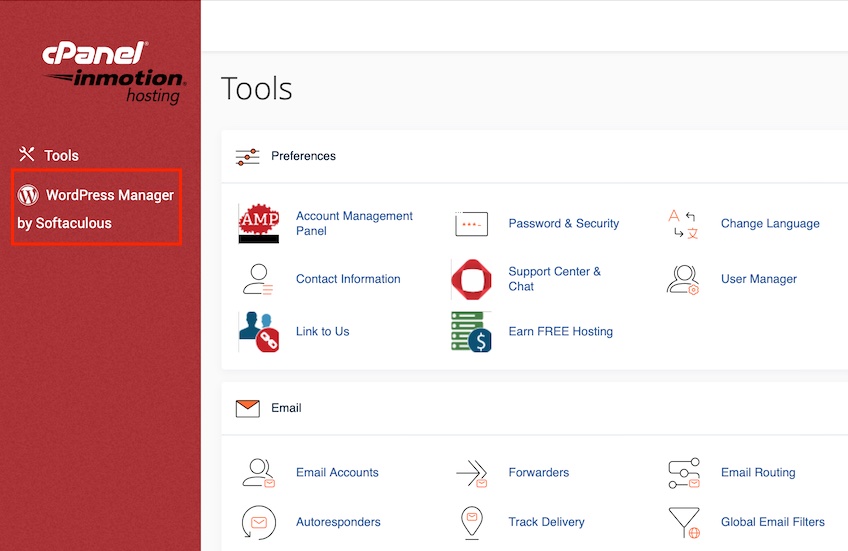
Customer Support
Support is a standout. You get U.S.-based teams, an extensive knowledge base, community forums, and a helpful YouTube channel. Live chat and tickets are available 24/7. Phone support is included on Power and Pro plans, with typical hours of 9 AM–9 PM ET, Monday–Friday. If phone access matters, choose one of those tiers.
In our experience, chat agents were quick, accurate, and hands-on. Phone reps were similarly efficient, offering direct fixes without endless escalations.
Bonus: shared plans often include $150 in advertising credits (for example, Microsoft Advertising promos). Terms vary by offer, so check requirements like minimum ad spend and regional availability.
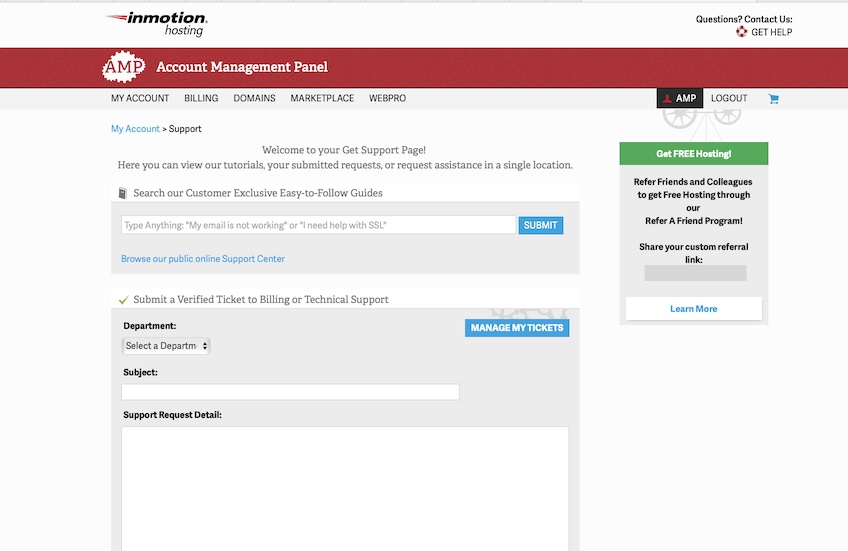
Scalability
Scaling is straightforward. There are four shared tiers with progressive resources and performance via UltraStack and NVMe SSDs. As traffic climbs or your stack grows, you can move into VPS (managed or cloud) or dedicated servers without changing platforms.
Current shared plan structure (websites & storage): Core (1 site, 100 GB SSD), Launch (2 sites, 100 GB NVMe), Power (10 sites, 200 GB NVMe), and Pro (40 sites, 300 GB NVMe). Performance scales from roughly 2× (Core) up to 20× (Pro) thanks to server-level caching and resource allocations.
When you need more muscle, Cloud VPS options start at entry-level monthly pricing for self-managed servers, while managed VPS with cPanel is available for teams that prefer a GUI and support for server administration. Dedicated servers are available for maximum isolation and customization.
Where InMotion Hosting Falls Short
InMotion’s strengths are geared toward power users. If you’ve never touched cPanel or DNS, getting comfortable can take time. The tradeoff is more control and speed once you know your way around.
Ease of Use (the not-so-good)
On rare occasions, new accounts may require manual verification before all features are available. If you see a “processing” or partially locked dashboard after purchase, hop on 24/7 live chat to expedite activation; phone support is available during weekday hours.
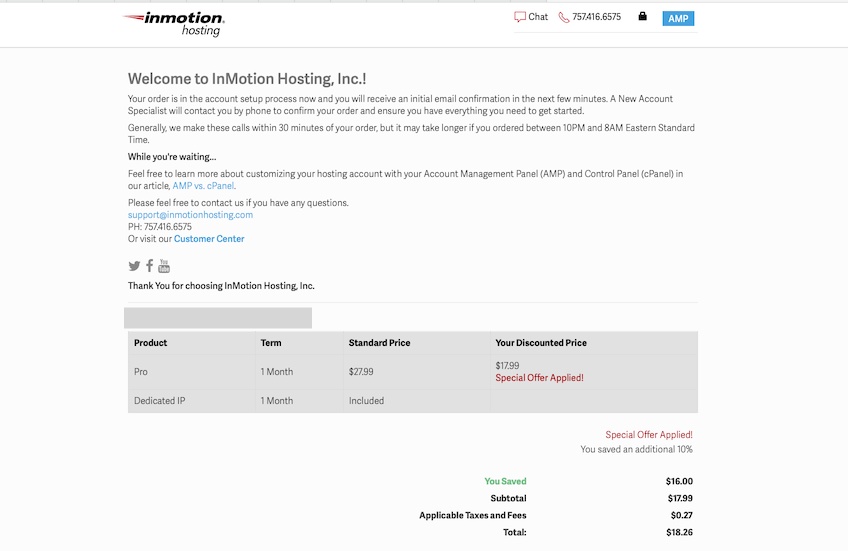
During verification, some AMP sections can be disabled. If that happens, contact support—agents can typically complete activation and let provisioning finish behind the scenes.
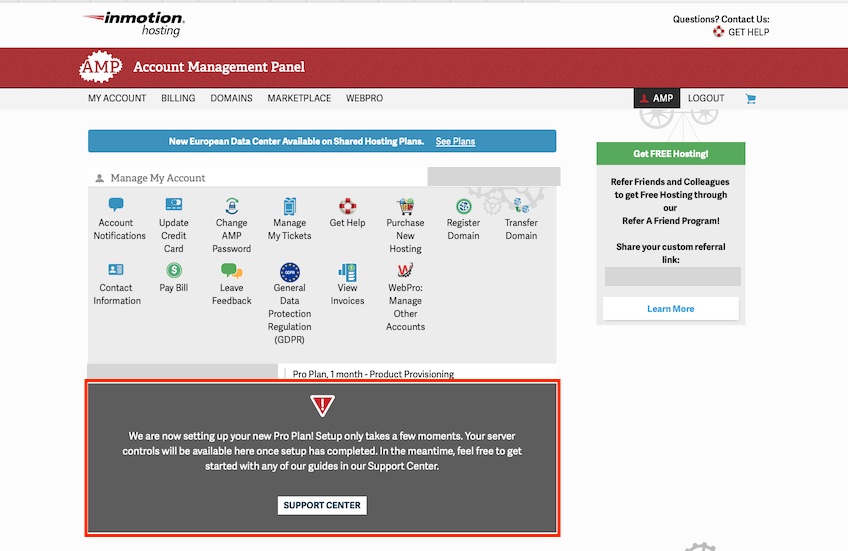
Also note that while you can install WordPress and other apps in one click, the shared plans themselves don’t come with a proprietary, beginner-only dashboard—this is a platform that rewards familiarity with cPanel and standard tooling.
Plans & Pricing
InMotion Hosting offers four shared plans, all including free SSL, unmetered bandwidth, email accounts, one-click installs for 400+ apps, and a 90-day money-back guarantee. A free domain credit is included on 12–36-month terms (first year only).
- Core: starting around $3.19/month with multi-year terms — 1 website, 100 GB SSD storage, unlimited email addresses.
- Launch: starting around $4.99/month with multi-year terms — 2 websites, 100 GB NVMe storage, elevated performance, unlimited email.
- Power: starting around $4.99/month with multi-year terms — 10 websites, 200 GB NVMe storage, advanced caching, ecommerce-ready features.
- Pro: starting around $10.99/month with multi-year terms — 40 websites, 300 GB NVMe storage, dedicated IP included, highest shared performance.
Month-to-month pricing is available on all shared tiers if you want flexibility (higher rate vs. annual terms). If you’re confident you’ll stick around, multi-year terms lock in the best introductory pricing.
Upgrading is painless—no migrations needed inside the shared family. Choose a tier based on sites, storage, performance, and whether you need phone support (included on Power and Pro).
Here’s what to watch for at checkout so your total cost matches your expectations:
- Domain registration: included for the first year on 12–36-month shared terms; otherwise pricing varies by TLD (a .com is typically marketed as roughly a $20–$25 value).
- Domain privacy: typically about $15.99/year per domain if you add WHOIS privacy.
- Domain transfers: usually include a one-year renewal; fees vary by TLD.
- Backups: Backup Manager is an add-on that enables automatic daily backups and one-click restores; pricing starts around a few dollars per month based on storage blocks.
Beyond shared hosting, managed VPS with cPanel is available for teams that want GUI administration, while self-managed Cloud VPS plans offer lower entry pricing for command-line pros. Dedicated servers are available when you need fully isolated resources and custom configurations.
To learn how we evaluate hosts, see our complete guide to the best web hosting services.
